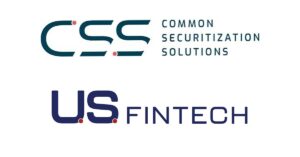When it comes to the mortgage process, homebuyers and loan originators sometimes describe their transactions as trauma-inducing in nature. The breadth and depth of information — and infinite documentation — required is enough to make anyone severely stressed.
What’s more, the complex and time-consuming nature of the process severely limits an originator’s ability to scale their business beyond the closing of a handful of loans each month. To provide their clients with a world-class experience, they are forced to work long hours, leaving little time for the people and activities they love.
Restrictions related to the COVID-19 pandemic have injected even more limitations and complexities into the process. With the dramatic growth in borrower demand spurred by record-low interest rates, originators and their lender partners are overwhelmed. This trickles down to clients, leaving everyone frustrated and exhausted.
Need to streamline
In November 2020, the average mortgage closing process took 55 days, or 10 days longer than a year earlier, according to Ellie Mae. This was due in part to overwhelming demand for new purchase loans and refinancing activity. This time is mainly spent chasing down and processing the documents required from borrowers and other collaborators.
Multiply the inefficiencies in the process with the sheer number of players involved in each transaction and it’s no wonder everyone is frazzled by the end. To say mortgage processing is due for a digital transformation is an understatement. Efforts to streamline mortgage processing through technology have provided some relief. Existing systems, however, have gaps and limitations.
For example, a point-of-sale system may require a tax return as an initial document but typically lacks the intelligence to ask for the necessary letters of explanation and supporting documentation. Additionally, a loan origination system can have numerous integrations, so while it can capture data from submitted documents and other sources, it may not automatically trigger requests for the correct documents from all of the parties involved.
Timely feedback
Communication is another area in need of significant improvement. Current systems generally focus only on communications between the lender, originator and consumer. To streamline the process, it’s important to bring all parties involved into a central gathering place to share the required documents and other transactional details.
Any party in the process should be able to get immediate feedback without having to wait for overwhelmed processors and underwriters — each of which have differing levels of experience — to review items. These are gaping holes that are complex and difficult to solve. Lenders are not in a position to decipher the issues regarding third-party document collections, reviews or communications. These ancillary parties do not want a portal for every lender. They want a neutral platform with a world-class and intuitive solution.
Without automation to facilitate document gathering, intelligence to detect what’s missing and a portal for centralized communications among all parties, one missing form or data point can stop the entire process. This creates added delays and frustration. Enough is enough — it’s time for a change.
Ultimately, what’s needed is a system that focuses on documentation rather than the application itself, since this is where much of the inefficiencies start. Technology can significantly streamline mortgage processing in several ways, helping originators to effectively double the number of loans they close each month, improve client satisfaction and have more time to enjoy life.
Monumental task
The sheer volume of documents required to process a mortgage can number in the hundreds. Reviewing them all to make sure the information is consistent and correct is a herculean effort. In addition, loan origination, point-of-sale and automated underwriting systems (LOS, POS and AUS) rely on a sizable amount of self-reported data from borrowers, either through online applications or over the phone. This can create inaccuracies or result in conditions not being met, which stops the loan process from being completed.
With automated document collection and algorithms that enable intelligent data reviews, a digital mortgage processing system can trigger conditions and document needs based on the information at hand. It can automatically invite appropriate collaborators into the process at the proper stages. It also can understand and address unique situations and combinations of borrowers, lenders and specific loan program requirements.
In addition to tracking down documents and data, one of the areas in which originators spend the bulk of their time is communications with the numerous individuals involved in the process. This has previously required age-old, inefficient methods (phone calls, emails and texts) to ask for documents, answer questions and keep all parties up to date.
Intelligence can play a role here and save everyone significant time by automatically inviting the right parties into a centralized chat platform (similar to Slack, which has quickly gained popularity for a reason). This gives all stakeholders a single location to efficiently exchange information, address issues as they come up and improve response times.
All of this leads to much less back-and-forth work with underwriters and other parties. The result is the holy grail originators strive for, especially in today’s COVID-19 era: a zero-touch loan.
An overarching platform would work to identify upfront the documents and information that are needed for a particular combination of borrower, lender and loan program.
Unifying platform
Today there are many disparate systems (LOS, POS and AUS, among others) involved in the mortgage process. Although each of them address a specific stage of the loan journey, they too often communicate only with lenders and borrowers while leaving everyone else out. As mentioned, each of these systems also have gaps and limitations.
To solve for the existing gaps in these tools, an overarching platform would work to identify upfront the documents and information that are needed for a particular combination of borrower, lender and loan program. In addition to alerting parties about the documents that are needed at each stage, the platform also would know whom to request them from and provide status updates, keeping everyone in the loop.
Most importantly, this type of platform would not replace the current systems that banks and brokerages have already invested in. Rather, it would easily integrate with them to improve the process and increase the value these existing systems deliver. In turn, this would create a better overall experience for mortgage originators and borrowers.
Currently, originators rely on their LOS for document storage. Unfortunately, they’re the only ones who have access to this system. Additionally, LOS storage tools may have clunky designs and can be difficult to navigate.
What’s missing from today’s mortgage process is a single source of truth. A unifying platform also can address security and privacy concerns through the use of industry-standard encryption. It can enable secure access for any party that has been granted entry through unique login credentials and multifactor authentication.
● ● ●
Until now, the mortgage industry has remained virtually untouched by the kind of digital transformation that has reinvented many other industries. So far, technological innovations have provided benefits for specific parts of mortgage processing but stop short of delivering a holistic solution that overcomes the lengthy and painful lending experience for borrowers and originators.
In an industry that is reliant upon referrals and repeat business, it’s critical to consistently deliver an excellent borrower experience without sacrificing so much time and energy. A digital mortgage platform that is automated, intelligent and enables centralized communication stands to positively disrupt the business, making a home purchase or refinance a dream for everyone involved. ●
Author
-
Christopher Hussain is CEO of RealKey, a mortgage submission platform that he founded in 2015. A born entrepreneur, in 2013 he also co-founded Sindeo, a San Francisco-based startup that raised $50 million to create a new mortgage experience. As a recognized business and thought leader in the industry, he has successfully scaled numerous mortgage companies. In his current role at RealKey, Hussain is leveraging his breadth of industry experience to transform and enable faster, more efficient mortgage processing.
View all posts







